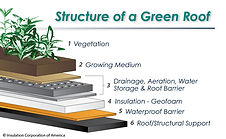Energy Savings Calculator
Ever wondered how much energy your currently using and how much of it you can save from just your roof? This roof savings calculator can help you assess how much energy you can save when considering regional data and a variety of other factors.
It protects us from most of the elements from the outside, but roofs also serve a vital function in keeping energy bills low. The more cold or hot air that seeps through, the more work household appliances such as your air conditioner has to work for you to be comfortable in your home or building
Energy Efficiency | Roofing


A cool roof is designed to absorb less heat than your typical standard roof. Conventional roofing material reflect only 5 to 15 percent from the sun. By Installing a cool roof, it can reflect more than 65 percent of energy from the sun. In result, temperatures can be reduced by up to 50°F and save you energy while making interior spaces more desirable. It is recommended to consider climate before installing any cool roofs.
Green roofs are primarily used in buildings with a flat or shallow-pit roofs and can include basic plant covering or a garden. Green roofs manage storm water on a flat rooftop space while providing insulation and reducing urban heat.
How your roof you energy can work in a variety of ways. Energy.gov summarizes two types of energy efficient roofs, cool roofs and green roofs.
What Else Can You Do?
One of the most basic and simplest things you can do to save energy anywhere in your home is to use products that are Energy Star certified. According to Energy star, any energy star product can lower roof surface temperature by up to 50 degrees Fahrenheit and can reduce cooling demand in hot temperatures by 10-15 percent.
Most issues with energy efficiency are due to common air leaks. Air leaks are not limited to just roofs, they can come from many exterior sources, and interior fixtures can help spread air even more throughout a building or home. When cool outside, heated interior air can be drawn into the attic instead of being dispersed more efficiency throughout a space if there are any air leaks in a home. It is important that you check for air leaks behind knee walls, attic hatch, wiring holes, plumbing vents, open soffit (box that hides recessed lights), Basement rim joists (where foundation meets wood framing), windows and doors. Silicone caulk, aluminum flashing, insulation materials, weather-strips, are common ways to fix air leaks, however, it is recommended to hire a contractor if you notice a wet/damp roof, excessive moisture, electrical hazards, or any other potentially hazardous conditions.



Need more Info? Contact Us
Please feel free to ask any questions about our suppliers, products, or estimates.





